Photographing the Moons of Jupiter
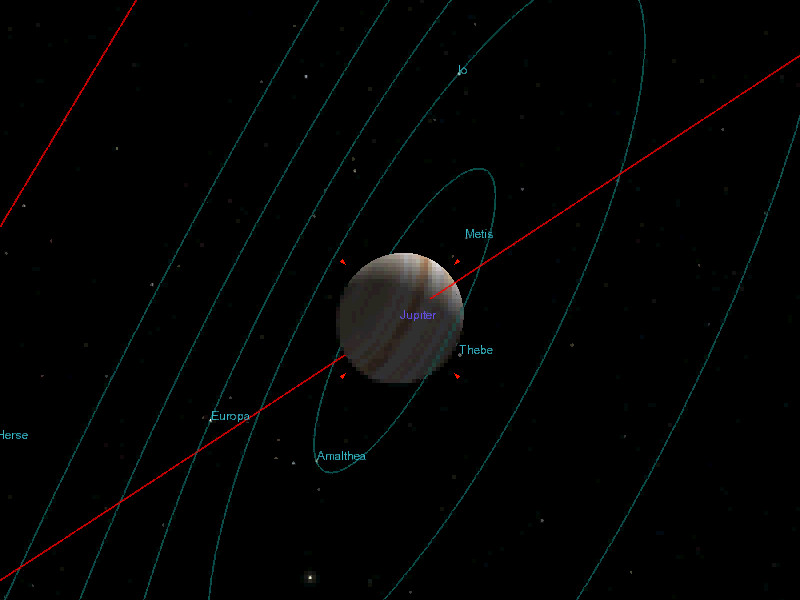
Simulated image using Celestia 1.6.1 to show the inner moons that circle Jupiter. Click to see an animation. Credit: Author
Jupiter, being a remarkable planet, also has a remarkable system of moons, which at last count numbered nearly 70. Of these 70 moons, only the 4 largest moons are easily visible in a small telescope, so how difficult is it to see the smaller moons? Given recent advances with modern cameras, I was keen to see if I could detect some of the smaller moons with my telescopes and here are my results.
Galilean Moons
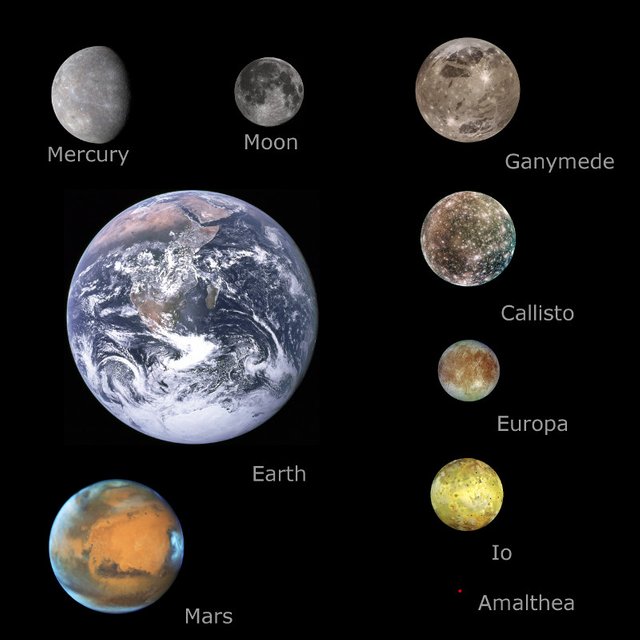
Relative sizes of Jupiter’s 4 largest moons, the Galilean moons, and the fifth largest moon Amalthea are shown in the right half of the image. The relative sizes of the Earth, Mars and Mercury and the Earth’s moon are also shown. Credit:Author/NASA
Before looking at the smaller moons of Jupiter, lets have a quick look at the 4 large moons, otherwise known as Galilean moons. The comparative sizes of the moons are shown in the diagram above, which also includes some familiar planets and our own earth moon. Ganymede the largest of the Galilean moons is not only bigger than our own moon, but bigger than Mercury! The fifth largest moon of Jupiter is also shown, Amalthea, but it's barely visible at this scale.
The Galilean moons were named in honor of Galileo Galilei who saw them in his primitive telescope in 1609, although it is likely the largest moon was seen earlier because under the right conditions and with excellent vision it can be seen with the naked eye. Indeed, there is a report as early as 365 BC from a Chinese observers. However, an ordinary pair of binoculars is all that is needed to show the 4 Galilean moons Ganymede, Callisto, IO and Europa. Photographically, a short telephoto will show the moons as can be seen below.
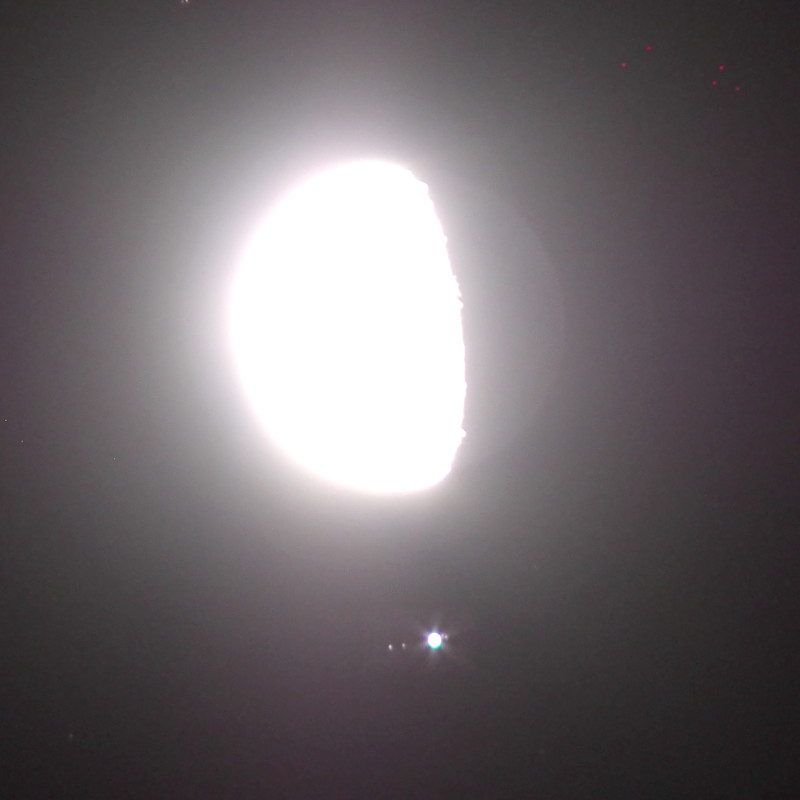
Our Moon, Jupiter and it’s moons Ganymede, Callisto, IO and Europa. Photographed with a 200mm f4 lens and OMD-EM5 on a tripod. The exposure is about 1 second, which results in the moon being very overexposed
In an ordinary amateur telescope, Jupiter’s large moons can be just resolved as tiny disks and so their relative sizes can be seen. Surface detail can be resolved on the tiny disks using a good imaging setup and the image below you can see some detail on Ganymede. The best amateur planetary imagers in the world are getting detail on the moons perhaps 3x finer than my image.
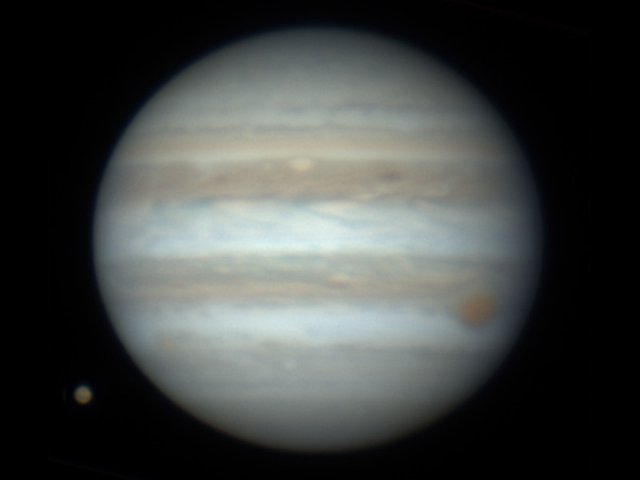
Jupiter and its largest moon Ganymede imaged by the author from his backyard on June 7, 2017, using a Celestron C14 and QHY Minicam5f Camera. Even though seeing was quite poor when this image was made there is some surface detail visible on the moon
The Inner Moons
Inside the orbit’s of the Galilean Moons lay 4 small moons known simply as the “Inner moons”. The easiest to find is Amalthea, the 5th largest moon of Jupiter, but it is extremely hard to see because not only is it small and faint it is also very close to the brilliant glare of Jupiter itself. I’d never seen an amateur photo of Amalthea so recently I took up the challenge and succeeded with my 14” C14 scope. You can see how small and faint it is in the photo, by comparing to Io and Europa which are visible at the left of this image.
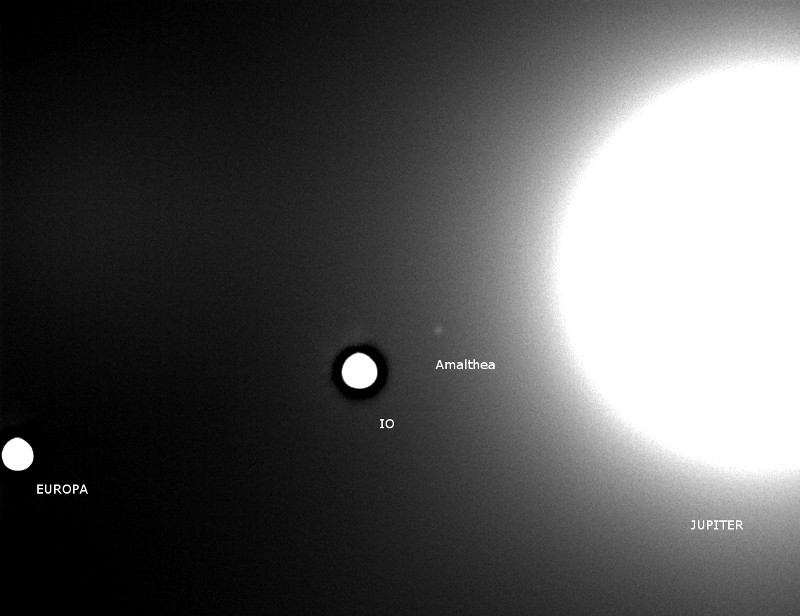
Jupiter’s moon Amalthea is visible as a faint star in this image using a C14 telescope. Credit: Author
Once I tracked down Amalthea I tried for an even greater challenge, the moon Thebe which is half the diameter of Amalthea and managed to detect it (see below). The next challenging inner moon is Metis, which I think I can image but it will require the right conditions to achieve. For the time being this is the only amateur image of Thebe I know of.
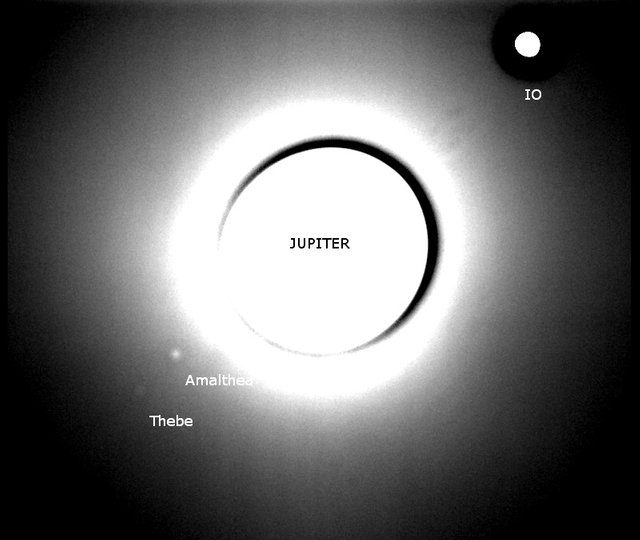
Jupiter’s inner moon’s Amalthea and Thebe are visible in this image using a C14 telescope. Credit: Author
The Himalia group
The Himalia group consists of 5 moons ranging from 4 to 170km in diameter, with largest being Himalia itself. The following image was made with just an 8” telescope and shows 3 of the 5 Himalia group moons. One surprise when looking for these objects is how far they appear from the planet itself, they orbit around 11-12 million km out which means they can be over a degree distant from the planet in our sky.
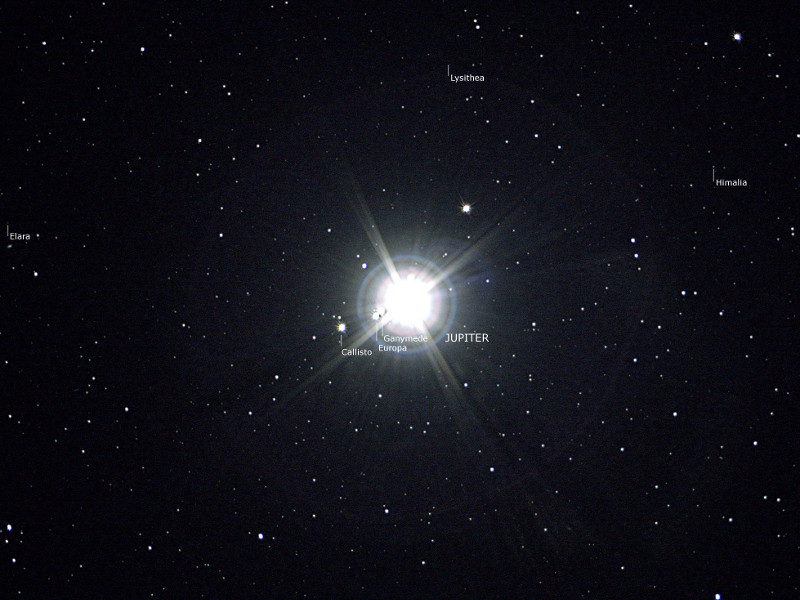
An 8” telescope was used to take this photo of Jupiter and 3 of the Himalia group moons. The planet is very much over exposed, but some of the moons are marked (and best seen in the full size image which can be viewed by clicking the image)
The Outer moons Anake, Carme, Pasiphae and Sinope
Even further out from Jupiter at around 20 million km, are several other groups of moons. However, only 4 of these moons are even remotely large enough to be detectable by amateurs and these are Anake, Carme, Pasiphae and Sinope, the largest of which is 60km in diameter. In the image below Sinope and Pasiphae are visible, while the other 2 moons were well outside the field of this image. To see the image properly the full size version needs to be viewed by clicking on the image itself.
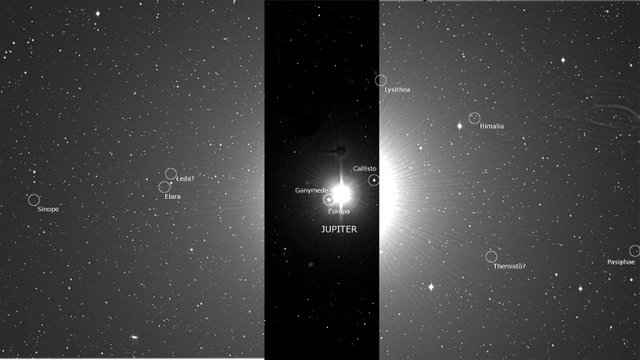
Some of the more distant moons of Jupiter taken with a 14” telescope and cooled CCD camera (QHY9). Credit: Author. Please click on image for larger version
How to find these moons
To even attempt to find the fainter moons you need a good planetarium program. The one I use is guide 9.1 which although not having the fanciest UI is one of the better programs for serious amateur astronomers. In addition to guide I will take another set of images 30 minutes later to verify a positive detection because the moon/moons will have moved in that time.
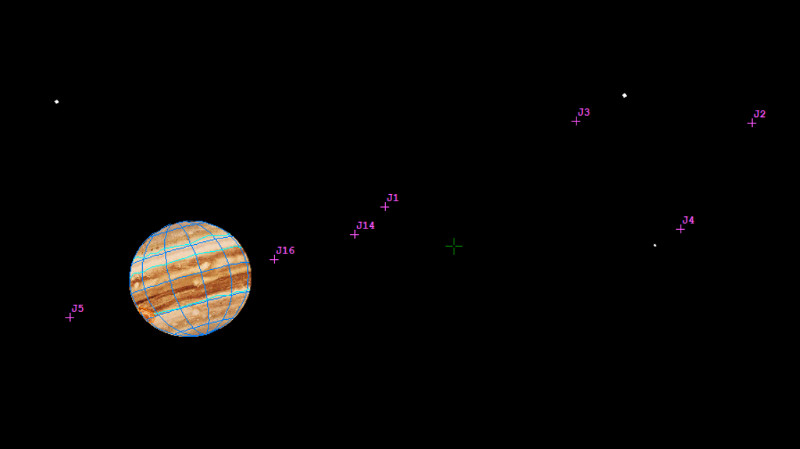
Typical output from guide 9.1 used to identify and find moons (labelled starting with a “J”)
Conclusions and Further Information
This was a fun and challenging project to take on. I hadn't realized it was possible to detect more than 4 moons of Jupiter and all up I think I was able to image 10 (all from the suburbs of Brisbane!).
Please see my Jupiter moons animation here
For list of moons of Jupiter and their properties see this link.
Excellent job, particularly on that Ganymede picture with details! Jupiter and its moons are quite awesome to see through a telescope. Ganymede and the others fascinate me because, despite being big enough to be planets if they orbited the sun directly, relatively little is known about them.
Yes they are incredible worlds, each with it's own story. IO is perhaps the strangest of all with it's Sulphur volcanism.
Awesome photography mate. Glad to find another aussie on the Steemit platform. #teamaustralia indeed! Look forward to your future posts. Cheers from Sydney, Australia. Take care buddy!
Thanks @chunger! Cheers from Brissie.
This is a test comment, notify @kryzsec on discord if there are any errors please.
Being A SteemStem Member